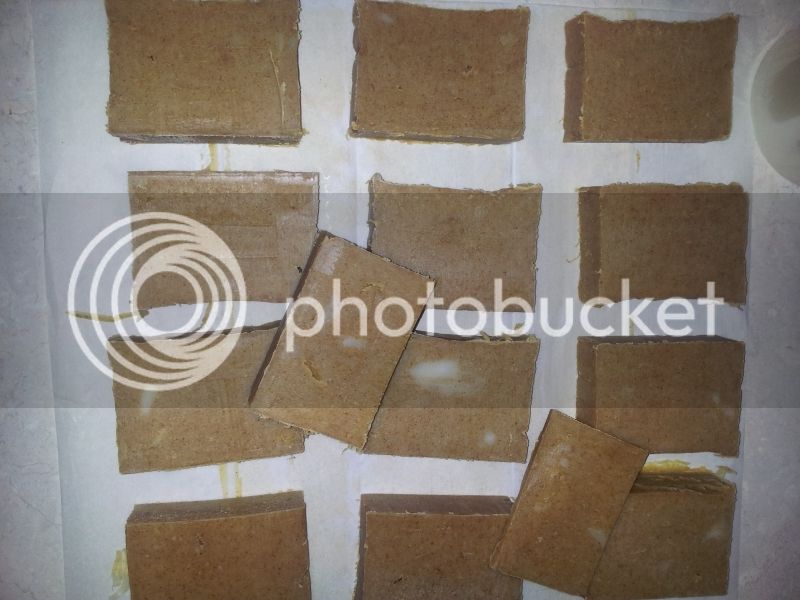Kittish
Enthusiastic Newbie
- Joined
- Jun 12, 2017
- Messages
- 1,365
- Reaction score
- 1,386
So, as the title says I'm a newbie to making soap. I just made my very first ever batch tonight, in fact. It's in the oven doing its thing til tomorrow sometime.
I kinda jumped right into it with both feet. I have to use real EOs for scent, since I'm allergic to artificial fragrances. Starting out with six bottles- 10x orange, cedarwood, frankincense, ylang ylang, fir needle, and lavender. I really wanted to get some rose absolute, but just can't justify spending $50 on a bottle that will probably only make one batch of soap. I also have a selection of colorants, both botanical and mineral pigments.
This first batch is scented with 10x orange EO, and also has some dried orange peel powder. When it went into the mold it was a pretty orange color, and it should get even brighter. I think every soap making book and blog I've come across so far has a recipe for some version of it.
I built my recipe using SoapCalc to get some idea about the properties I hope to get out of this batch, in addition to figuring just how much lye I should use. I'll check if it's ready to be unmolded tomorrow, and hopefully be able to cut it and start it curing. I nailed my batch size, it fit perfectly into a 4 pound loaf mold.
My plan at the moment is to make probably six or eight batches of soap over the next month-ish, experimenting with different processes and materials (and hopefully have some great Christmas presents when I'm done). I'm just about chomping at the bit to try a clear soap, and wondering if indigo would survive the cooking and solvent stages. I have this mental image of a clear sky blue soap, with fluffy white clouds with silver linings floating in the center.
I kinda jumped right into it with both feet. I have to use real EOs for scent, since I'm allergic to artificial fragrances. Starting out with six bottles- 10x orange, cedarwood, frankincense, ylang ylang, fir needle, and lavender. I really wanted to get some rose absolute, but just can't justify spending $50 on a bottle that will probably only make one batch of soap. I also have a selection of colorants, both botanical and mineral pigments.
This first batch is scented with 10x orange EO, and also has some dried orange peel powder. When it went into the mold it was a pretty orange color, and it should get even brighter. I think every soap making book and blog I've come across so far has a recipe for some version of it.
I built my recipe using SoapCalc to get some idea about the properties I hope to get out of this batch, in addition to figuring just how much lye I should use. I'll check if it's ready to be unmolded tomorrow, and hopefully be able to cut it and start it curing. I nailed my batch size, it fit perfectly into a 4 pound loaf mold.
My plan at the moment is to make probably six or eight batches of soap over the next month-ish, experimenting with different processes and materials (and hopefully have some great Christmas presents when I'm done). I'm just about chomping at the bit to try a clear soap, and wondering if indigo would survive the cooking and solvent stages. I have this mental image of a clear sky blue soap, with fluffy white clouds with silver linings floating in the center.





